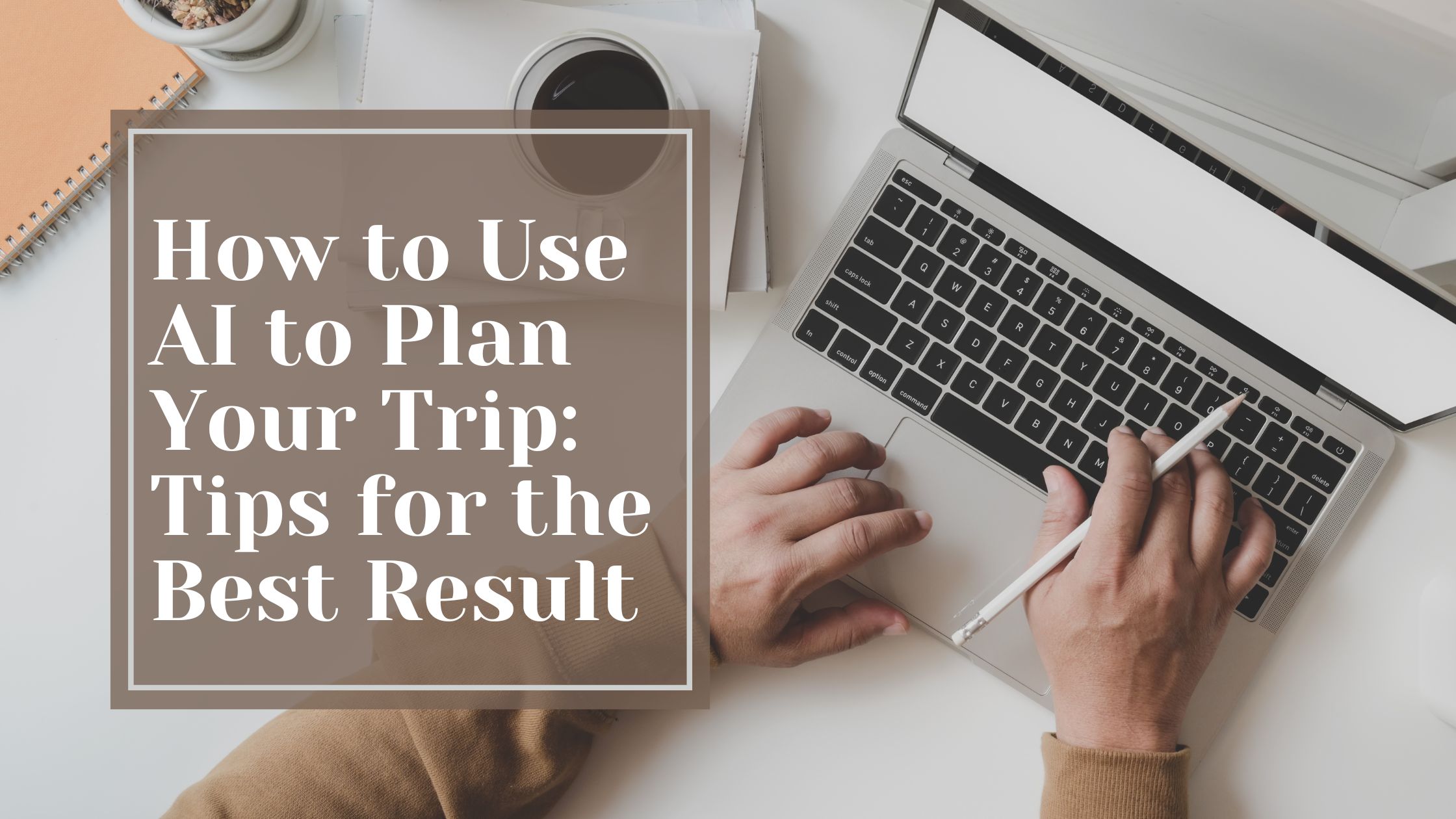If you’ve ever spent hours comparing flight prices, reading endless travel blogs, or getting lost in the maze of hotel reviews, you’re not alone. Trip planning can be overwhelming. But with today’s advanced AI tools like ChatGPT, Gemini, Claude, Mindtrip, Vacay, and GuideGeek, a lot of that stress is being lifted off our shoulders. These tools are becoming powerful travel companions, helping us build custom itineraries, find hidden gems, and make smart decisions—all in just a few clicks. Sounds dreamy, right?
But let’s be honest: while AI can help make travel planning easier and faster, it’s not perfect. Sometimes, it misses the mark. Attractions might be closed, the weather might ruin your hike, and AI might recommend a “hidden gem” that’s actually packed with tourists. If you’re thinking of using AI to plan your next vacation, you’ll want to know how to get the most out of it, what it does well, where it struggles, and how you can use it to your advantage without getting caught off guard.
Why Travelers Are Turning to AI for Trip Planning
AI tools are designed to take the stress out of planning. Apps like Hopper, TripIt, and Google Flights can scan through millions of data points in seconds. They help you find the best flights, hotels, and even tell you when prices are expected to rise or fall. AI assistants like ChatGPT or Claude can help build out full travel itineraries with suggested routes, restaurants, and activities.
Imagine you’re planning a trip to Italy. You could ask ChatGPT, “What’s a 10-day itinerary through Jamaica that includes food, art, and a few beach days?” In seconds, you’ll get a day-by-day breakdown of Ocho Rios or Kingston. AI can spark ideas and organize your plans in a way that’s faster than scrolling through travel blogs for hours.
But remember, AI uses data from past trends. That means it doesn’t always have the latest info. A cool little shop in Jamaica it recommends might have closed last year. That’s why it’s always smart to follow up by checking official tourism sites or local listings on Google Maps.
AI Travel Tools and What They’re Best At
With so many platforms out there, which ones actually work? Here are a few AI-powered tools we’ve tested and recommend:
ChatGPT is one of the most flexible tools for planning. You can ask it anything from “Where should I go in Europe in spring?” to “Best ways to get from Lisbon to Porto.” If you use the free version, keep in mind the information is based on data up to 2021 unless you're using a web-enabled version. The ChatGPT Plus plan includes GPT-4, which can access more current, real-time data through web browsing and plugins.
Ask KAYAK is KAYAK’s free AI planning tool. It lets you input your budget, dates, and preferences, and then it suggests destinations and flights to match. Since it’s powered by ChatGPT, the same rules apply—use it for inspiration, but always verify the suggestions with airline sites or local tourism boards.
TripIt helps you stay organized. Just forward your hotel, flight, and car rental confirmation emails, and it builds a digital itinerary for you. If you upgrade to TripIt Pro, you get real-time alerts for gate changes, flight delays, and even better perks like alternate flights and country-specific advice.
Hopper is a must for budget travelers. It uses AI to predict the best times to book flights and hotels. The app sends you price drop notifications and even offers price freeze features. If you're wondering whether to book now or wait a bit, Hopper is your go-to tool.
Google Flights has powerful AI that not only shows you flight options but also predicts when prices might go up. Combined with Google Travel, it becomes a one-stop shop to explore destinations, check local highlights, and even plan day trips with Maps integration.
Gemini, formerly known as Bard, is another great AI assistant that works well with other Google products. You can use it to create personalized itineraries, pull travel tips from Gmail, and sync your trip planning with Google Maps and Calendar.
Claude, from Anthropic, is ideal for detailed questions and custom plans. Ask things like, “Best time to visit Kyoto without crowds,” or “Three-day itinerary in Vancouver with toddlers,” and you’ll get thoughtful, specific recommendations. Claude’s friendly tone makes it feel like you’re chatting with a well-traveled friend.
Tips to Get the Most Out of AI Trip Planning
Using AI is a game-changer, but here’s how to make sure you’re doing it right:
Double-check everything. AI tools are helpful, but they’re not always up-to-date. Check hours of operation, travel restrictions, or safety rules on official tourism websites like Visit Portugal, France.fr, or Japan National Tourism Organization.
Ask better questions. Be as specific as possible when talking to AI. Instead of “What should I do in Greece?”, ask “What are the best things to do in Santorini for couples in September?” The more details you give, the more useful your answers will be.
Use AI for ideas, not the final decision. AI is a fantastic starting point, but it shouldn’t be your only research tool. Read reviews on Tripadvisor, watch travel videos on YouTube, or browse inspiration on TikTok Travel. These human experiences add context that AI can’t always offer.
Try a mix of tools. Use ChatGPT or Claude for brainstorming. Use TripIt to organize your travel plans. Use Hopper to track prices. Use Google Flights to check timing and airlines. Each tool brings something unique, and together they make a powerful combo.
Consider paid versions. While most of these tools offer great free options, the paid versions usually come with more up-to-date info, quicker responses, and premium features. Tools like ChatGPT Plus, TripIt Pro, and Hopper’s price freeze features can be worth the investment, especially if you're planning a big or complicated trip.
When You Still Need a Human Touch
No matter how good AI gets, sometimes you just want to advice from a real person who had travelled the same place. You may read our travel blogs here for travel inspo and some sort of advice. Whether your flight’s delayed, your suitcase didn’t make it, or you’re trying to find the best gelato near your hotel in Florence, we’re here to help you figure it out.
So go ahead—try out AI for your next trip. Use it to spark ideas, build your itinerary, and track the best deals. Just remember to cross-check the important stuff, get personal recommendations where you can, and lean on human support when needed. AI is a powerful travel buddy, but your instincts and a little real-world research are what truly make a trip unforgettable.
And don’t forget to bookmark this guide or share it with a friend planning their next adventure. You’ll be glad you did.







Leave A Comment